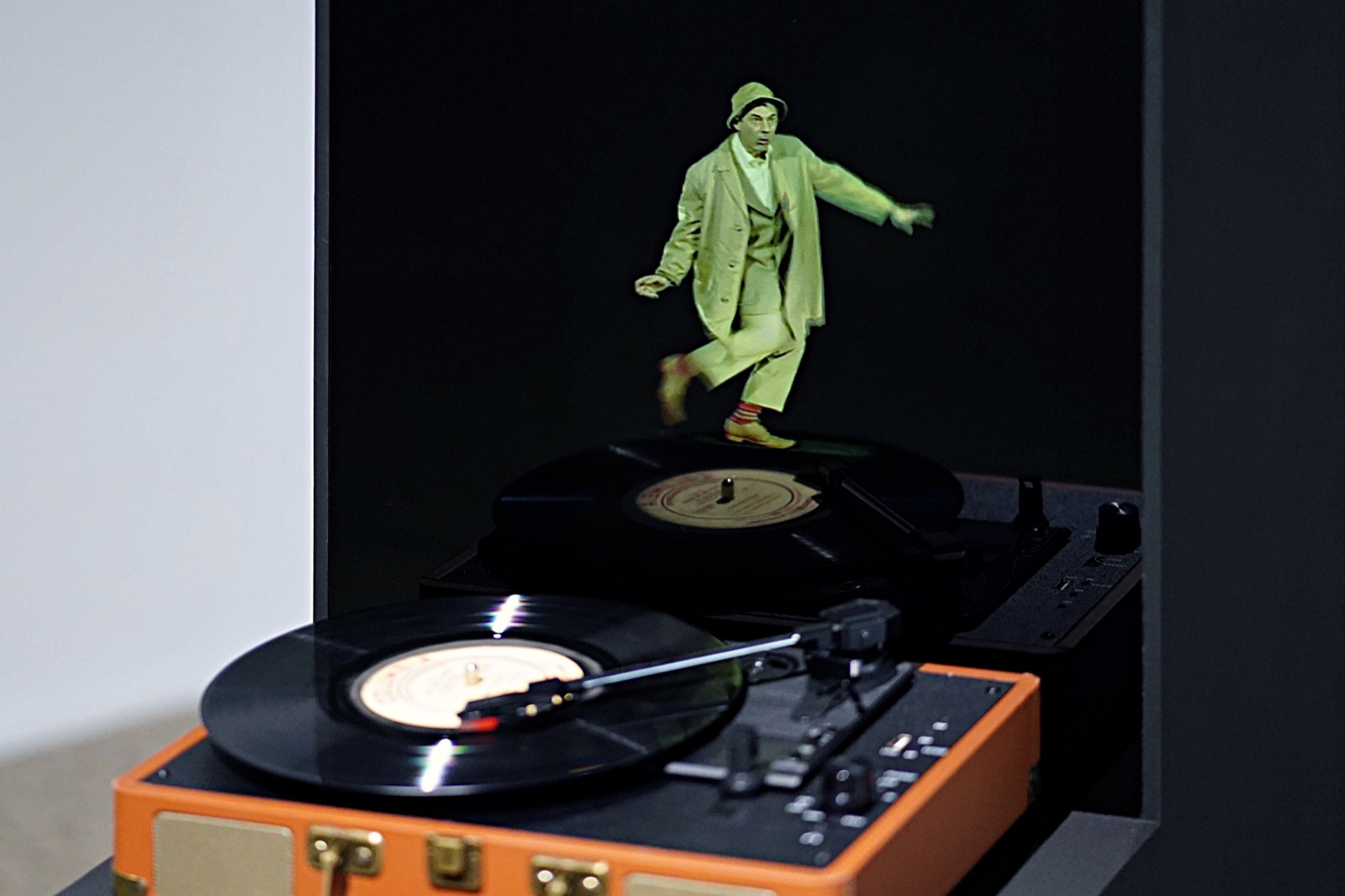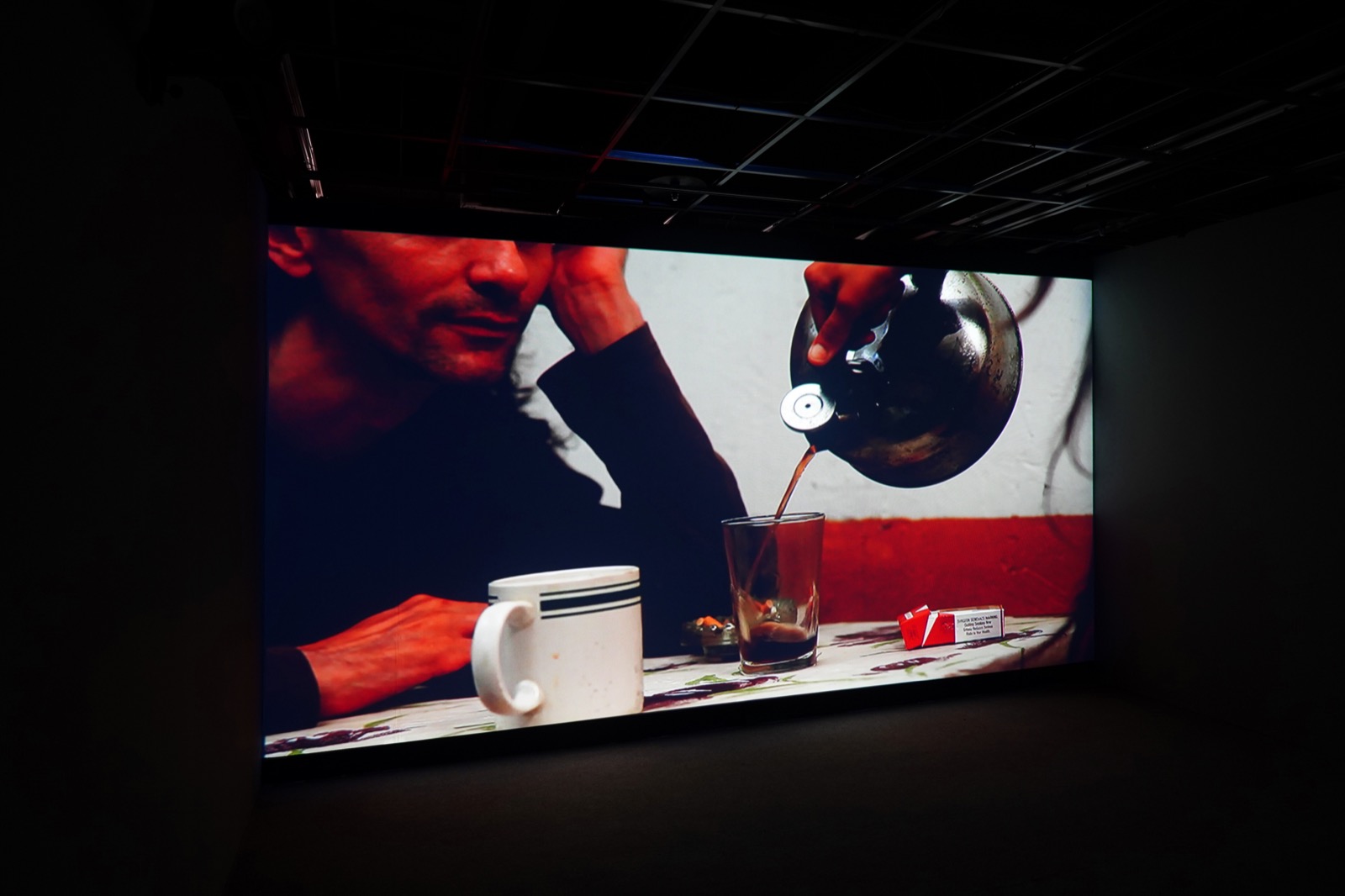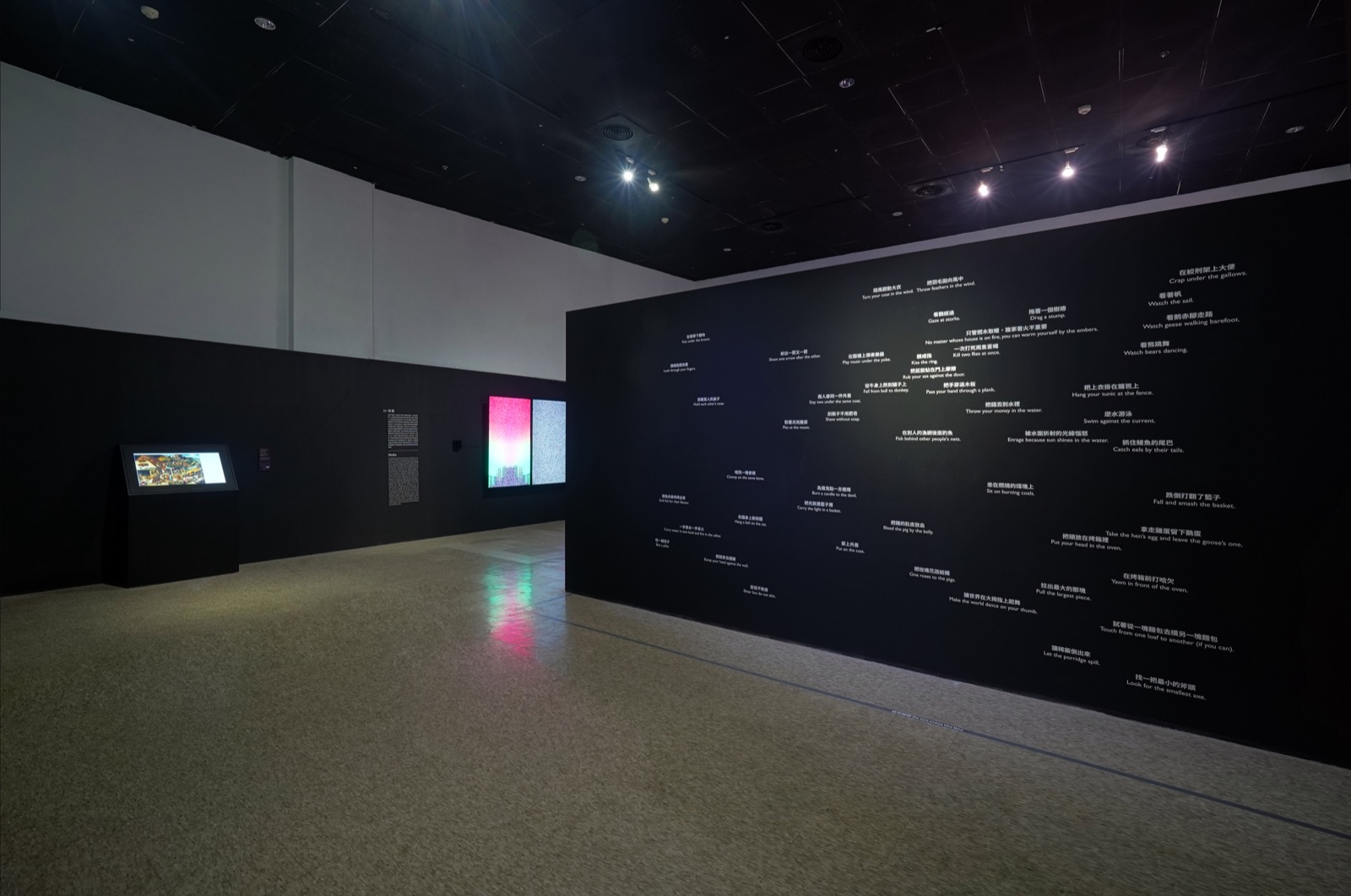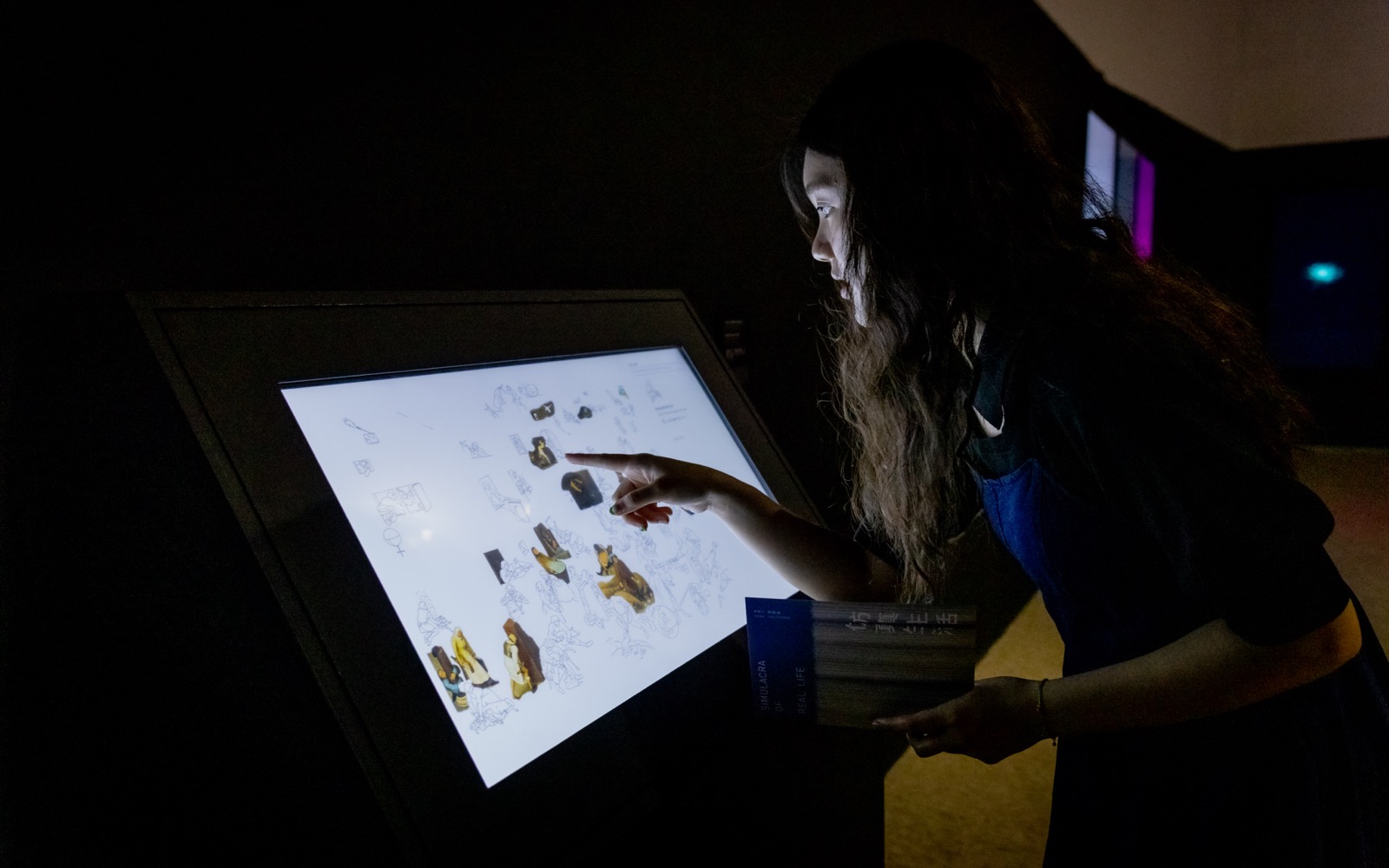About the Many Paths to (Real) Life Exhibition Narrative and Complex Meaning of “Simulacra of Real Life"
Text | Chih-Yun LIN
Originally published on magazin "Artouch", No. 2023.06.
 |
Pierrick Sorin, "Homage to Jacques Demy," 2008, video installation, 111×45×60 cm. |
The connection between life and art is often multifaceted and intricate. In the face of abundant information stimuli and the continually changing scenes of life, art is drawing increasingly closer to life, generating new perspectives by applying life itself. The annual exhibition "Simulating Life" at Hsinchu 241 Art Gallery, curated by Zhang Junyi, invites ten artists including Pierrick Sorin, Tsui Kuang-Yu, Musquiqui Chihying, Dorian Gaudin, Chen Wan-Ren, Éric Watier, Huang Yu-Xiong, Shih Shun-Chung, Chang Zuo-Zhu, and Julien Prévieux. They explores the themes of behavior, scenes, and media, offering unique reflections on the essence of (real) life.
Pierrick Sorin, "Awakening," 1998, video, color, sound, 5 minutes. |
Entering the exhibition space, the first thing that catches the eye is Sorin's video work "Awakening." In this piece, he captures the moments right after waking up each morning, expressing intermittent feelings and complaints about life, creating a sense of familiarity for the audience. In "Homage to Jacques Tati," Sorin, wearing a khaki-colored cloak, walks on a turntable, achieving an interaction between physical installation and video, creating a visually intricate presentation of reality and illusion. In "Pierrick Sorin, 261 Bd Raspail, Paris XIV," Sorin plays the roles of an artist, a TV host, and an audience member in a mock exhibition interview. The exhibition showcases three main aspects of Sorin's work: self-portraits, visual theater, and the portrayal of multiple roles by a single person. From a humorous, playful, and satirical perspective, Sorin magnifies and emphasizes the examination of daily life and the art ecosystem. In Tsui Kuang-Yu's "System Shortcut" series, he disrupts the conventional use of public spaces. Musquiqui Chihying's "Running" involves jogging on the conveyor belt at the supermarket checkout counter. Both artists, through changes in clothing, environment, behavior, and other conditions, go beyond the usual behavioral patterns of the space, bringing out a sense of absurdity in life.
|
Dorian Gaudin, "Saâdane & Sarah," color, sound, video, 4's 24". |
In the work "Saâdane & Sarah," artist Dorian Gaudin sets up a tilted room where ordinary activities in a couple's life, such as pouring water or opening windows, become difficult and lose balance due to the inclined terrain, illustrating the resistance between humans and objects. Chen Wen-Jen's "Little Black Cat" and "Mr. Bill's Morning" appropriate images from Diego Velázquez's "Maid" and the Windows XP desktop, creating ruptures in classic imagery, revisiting paradigms while infusing them with new possibilities. Watier's online work, "Discreet Works (thanks to Bruegel)," is an interactive piece co-created by the artist-curator Chun-Yi CHANG. They translate the various human behaviors presented in Pieter Bruegel the Elder's painting "Netherlandish Proverbs" into text and design corresponding interactive games. This allows the audience to explore behaviors as a starting point and connect to the exhibition's reflection of media intervening in life.
|
At the "Simulacra of Real Life" exhibition, from left to right: Éric Watier × Chun-Yi Chang, "Discreet Works - Homage to Bruegel" |
The rapid evolution of media technology not only adjusts lifestyle patterns but also gradually changes human behavior and language. Huang Yu-Hsiung's work "Blurred Conversations" explores the ambiguity and fragmentation of semantics when AI learns human language models. When humans converse with AI, the languages and thinking patterns of both collide, generating moving text boxes on the screen resembling images, creating a sense of ambiguous semantics. On the other hand, "Failed Perception" receives external data such as the number of people and spatial distance through sensors and transforms it into abstract images. Both "Blurred Conversations" and "Failed Perception" use computer algorithms to create painting-like images on the screen, seamlessly combining media, human behavior, and visual presentation. Additionally, in Shih Shun-Chung's work "Technological Zen," he repetitively presses the buttons on his phone, producing sounds similar to striking a wooden fish, creating an atmosphere reminiscent of a religious ritual.
At the "Simulacra of Real Life" exhibition, from left to right: Shih Shun-chung, "Techno Zen"; Fuzhong Boy, "Dry Landscape"; Huang Yu-Xiong, "Vogue Dialogue." |
Prévieux's "What Shall We Do Next? (Sequence #2)" also makes similar observations. The artist arranges common gestures people use when using smartphones into a dance score, and the abstract dance steps vividly reveal the impact of technology on behavior. In Prévieux's "Where Is My (Deep) Mind?" using a performative approach, four performers are invited to mimic the learning methods of artificial intelligence language. The concept envisions machines imitating human speech skills. During the enactment of language behaviors such as negotiation and humor, language deviations and errors often occur, giving rise to a sense of absurdity. Consequently, this dialogue based on artificial intelligence logic frequently results in discontinuous, ambiguous language, yet aptly portrays the process of mutual exploration, confrontation, and eventual collaboration between humans and machines.
|
Julien Prévieux, "Where is My (Deep) Mind?", video, color, sound, 14'59". |
What constitutes real life? How does one approach life's authenticity? The exhibition "Simulating Life" does not attempt to portray a singular, idealized lifestyle. Instead, within its comprehensive narrative, the exhibition seamlessly weaves through diverse artistic mediums and techniques employed by the artists. It delves beneath the surface of contemporary life, creating various perspectives. Spanning across behavior, scenes, and media, the exhibition prompts viewers to contemplate the patterns of life. It disrupts the patterns of everyday life, making them indispensable, and accentuates the intertwined nature of art and life. In doing so, the exhibition accomplishes a nuanced transition from "simulating life" to "simulating the simulation of life."
|
"Éric Watier ×Chang Chun-Yi, 'Discreet Works - Homage to Bruegel (Online Work),' 2019, Interactive responsive webpage. |






